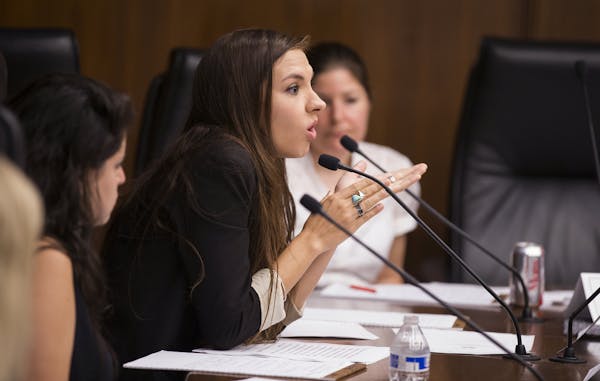Elected leaders returning to St. Paul on Tuesday to debate some of the biggest and most urgent issues facing the state will arrive to an emptied Capitol in the midst of a massive reconstruction.
The makeshift House chamber is surrounded by nearly 400 construction workers trying frantically to keep a multiyear renovation on schedule, leaving legislators to conduct their business in an active construction site until the session ends in May. There will be no running water or public viewing space, and perhaps most worrisome, a strict occupancy limit of 258, including all 134 House members.
"I'm going to be praying for patience," said Rep. Greg Davids, R-Preston. "We are going to have to understand that it's not business as usual, just from the logistical standpoint."
The headaches looming over the upcoming session are not just logistical, but political, too.
Lobbyists, advocacy groups and members of the public are fretting over how officials will be able to pull off a legislative session around the construction and still address a range of complex and pressing issues, from tax cuts and state-paid preschool to a bonding bill and a politically thorny transportation package.
State leaders must struggle through the challenges during a dramatically shortened legislative session and still keep an eye on November, when all 201 seats are up for election.
"I don't know how my staff and commissioners are going to be able to access legislators directly while they are in session, particularly in the House," said DFL Gov. Mark Dayton. "This is going to be the most difficult of the legislative sessions affected by the Capitol renovations."
Dayton has been living with the construction hassles for nearly two years.
During the renovation, the governor and his staff temporarily relocated to the veterans building clear across the Capitol campus, settling into a makeshift office a couple blocks from the State Capitol and neighboring House and Senate offices.
"I found it extremely difficult [last year] to be in another building removed from the Legislature," Dayton said. "This time it's going to be even worse because the access there is going to be extremely limited."
Expectations for the session are already being tempered by the reality that legislators don't have to do anything this year. The state will be only midway through its two-year budget cycle and is sitting on a $900 million projected budget surplus that could be left alone until next year. And in an election year when DFLers are trying to hold the Senate and Republicans are determined to hold the House, some legislators see little chance for any major political victories.
"Everyone knows this is the session where nothing has to be done," Davids said. "I want to do a lot. But if there are too many lines drawn in the sand from either side, it could render nothing and I hope that's not the case."
Reinforcing the modest expectations, a new state budget forecast lowered the projected budget surplus and offered a more gloomy outlook for the global economy.
"I think everything got a little harder," said Senate Majority Leader Tom Bakk, DFL-Cook.
The construction challenges in the House chamber will contrast vividly with the Senate, where DFLers just moved into a glassy new $90 million office building that Republicans stridently opposed. For their part, Senate Republicans are refusing to move in for now, and they're leaning hard on the building controversy as a way to frame Democrats as wasteful spenders.
Republicans will stay in their aging lower-level offices a block away, and will walk over to the new building for committee hearings and floor sessions.
Sen. David Osmek, R-Mound, called the new building "a boondoggle."
Lobbyists are worried about their level of access to legislators, since there will be only two entrances to the House floor chambers, a basement elevator access from the Capitol's tunnel system and a north entrance.
For lobbyists, access is critical, particularly in the fast-paced closing weeks of the session when legislators are in and out of meetings and floor sessions. It's often their last, best chance to make their case before a vote.
Lobbyists previously were able to interact with House members as they entered the chambers. With limited public space, some expect they'll be in an entirely different building while they monitor floor proceedings on televisions.
The State Office Building, where House members and the Senate GOP have offices, will be designated for remote public viewing of House floor sessions. From here, House pages will shuttle back and forth, across a busy street, delivering messages between members of the public who came to the Capitol and House members.
"I'm still trying to understand how it will work," said Rep. Diane Loeffler, DFL-Minneapolis. "It's going to be frustrating for them to have notes and not be able to interact with us directly."
Davids, the GOP House tax chairman, is already advising constituents on how to best reach him — e-mail or text message.
Once the session gets rolling, Davids admits, he could be tough to reach.
"It may be my Apple iPhone 6 coming to the rescue," he said.
Ricardo Lopez • 651-925-5044
The Latest | Jury selection in Trump's hush money trial shifts to picking alternates
Biden's new Title IX rules protect LGBTQ+ students, but transgender sports rule still on hold

